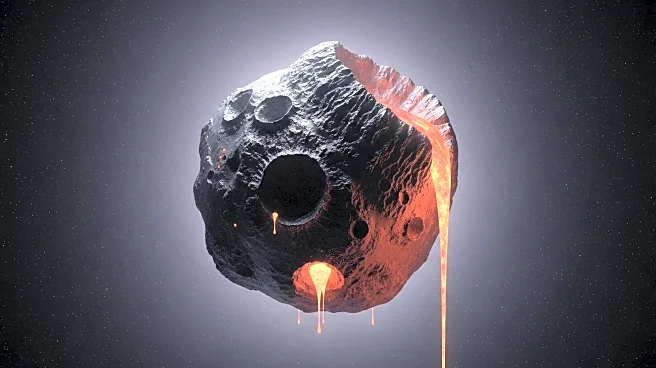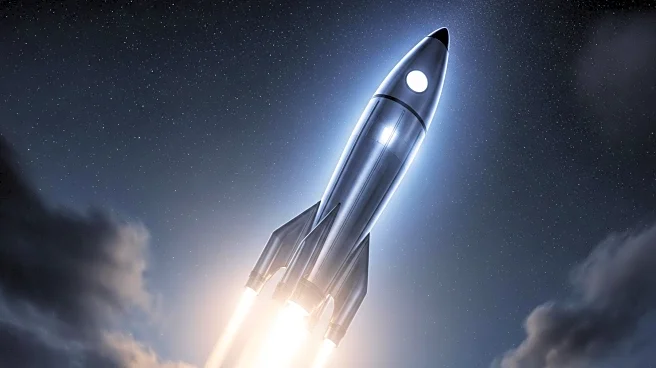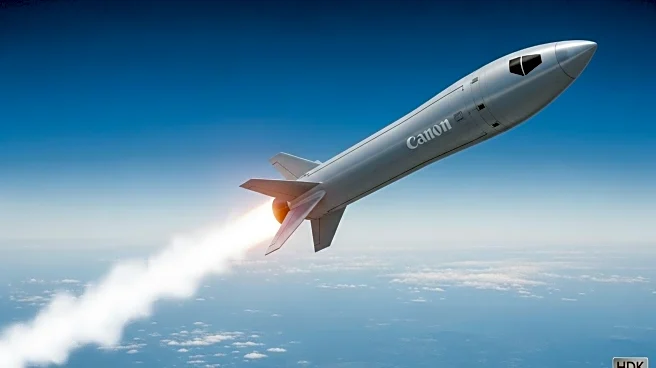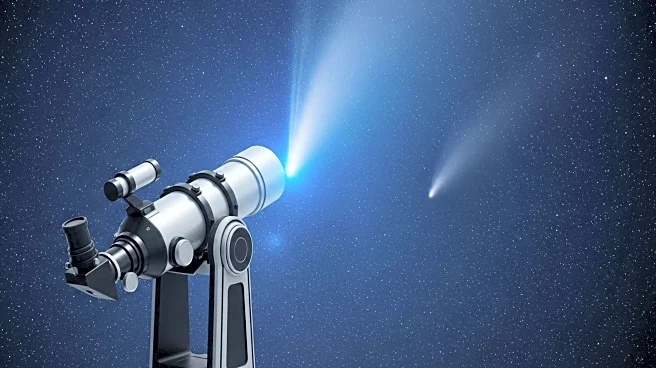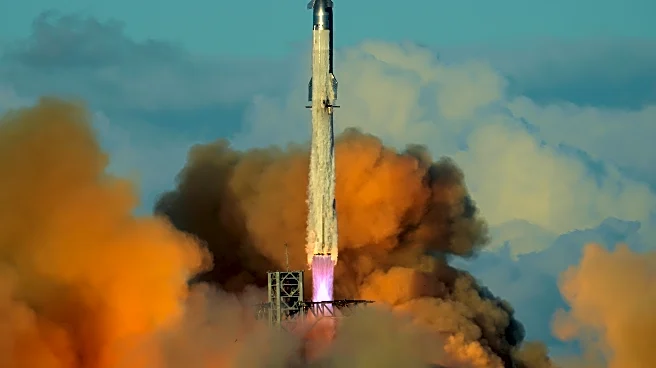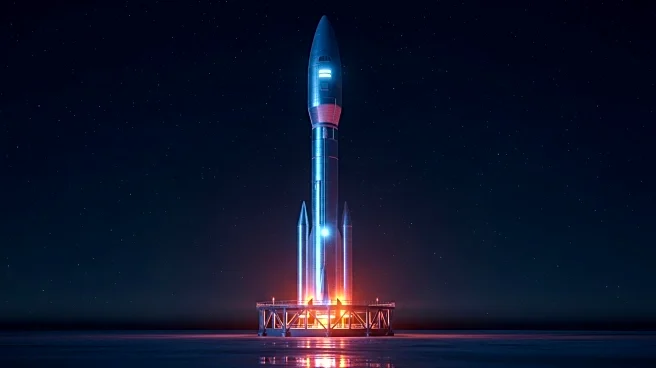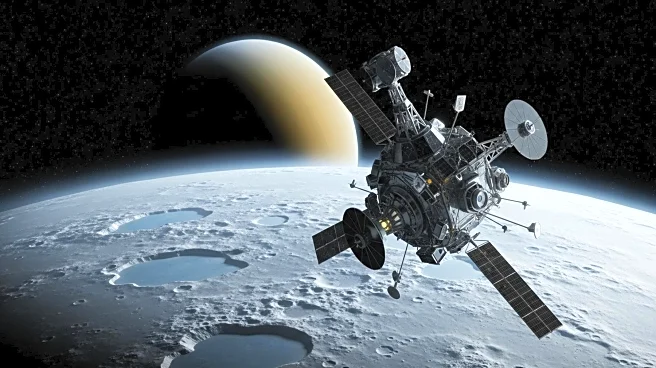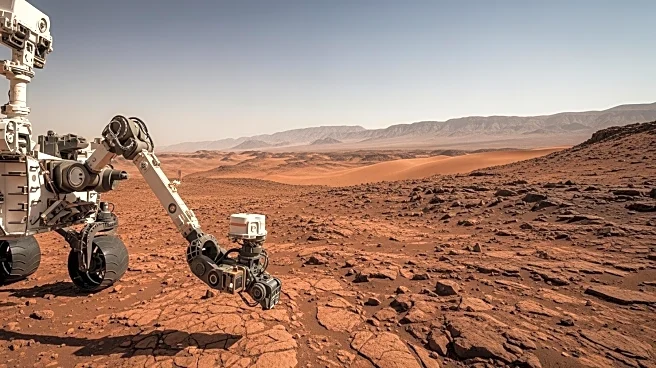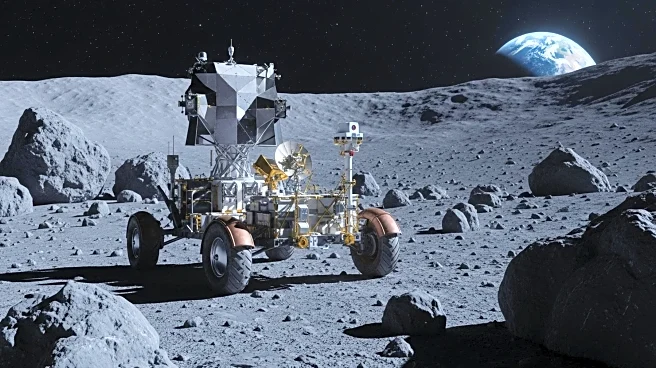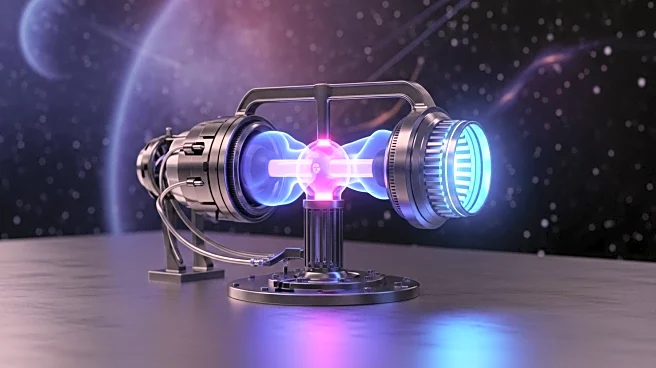What's Happening?
A new study proposes that the asteroid Psyche, valued at $100,000 quadrillion, may have been shaped by metal volcanoes. Psyche, located in the asteroid belt between Mars and Jupiter, is known for its high reflectivity, suggesting a metallic surface. Researchers at Arizona State University and Vrije University in Amsterdam have modeled Psyche's composition, indicating that its metallic sheen could be the result of ferrovolcanism, where molten metal erupts from the asteroid's core. The study suggests that Psyche's core solidified from the outside in, creating pressure that caused molten metal to pierce through the mantle and surface.
Why It's Important?
Understanding Psyche's composition is crucial for planetary science and could provide insights into the formation of celestial bodies. The concept of ferrovolcanism challenges traditional views of asteroid formation and suggests that metal-rich asteroids may have complex geological histories. This research could impact future asteroid mining endeavors, as Psyche's metal content is of significant economic interest. Additionally, the study contributes to the broader understanding of planetary formation processes and the role of volcanic activity in shaping celestial bodies.
What's Next?
NASA's Psyche mission, set to launch soon, will provide close-up images of the asteroid, potentially confirming the presence of metal flows and validating the ferrovolcanism hypothesis. The mission aims to gather detailed data on Psyche's surface and composition, which could refine models of asteroid formation and inform future exploration and mining strategies. Researchers will continue to analyze meteorite data to better understand the chemical conditions that allow ferrovolcanism to occur, potentially leading to new discoveries about asteroid geology.
Beyond the Headlines
The study of Psyche's composition highlights the complexity of asteroid geology and the potential for diverse formation processes. It suggests that metal-rich asteroids may have undergone unique geological events, challenging assumptions about their origins. This perspective could influence how scientists approach the study of other asteroids and their potential for resource extraction, as well as the development of technologies for exploring and mining celestial bodies.
